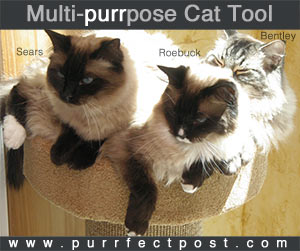Feline Cardiomyopathy
Cardiomyopathy is a big mouthful of a word, but it really just means disease of the heart muscle. This is not one single disorder but is a little family of heart conditions.
Types of Cardiomyopathy in Cats
Most veterinary cardiologists classify feline cardiomyopathy into three main types:
- Hypertrophic cardiomyopathy (HCM)
- Dilated cardiomyopathy (DCM)
- Restrictive cardiomyopathy (RCM), also termed concentric
A fourth type, unclassified cardiomyopathy, is intermediate in type between the others and is accepted as a separate class by most cardiologists. Arrhythmogenic right ventricular cardiomyopathy has also been separately classified more recently.
Signs of Feline Cardiomyopathy
Some cats go for years without any apparent signs of heart disease, others experience heart failure and death. The causes, signs, and treatments are different for each of these conditions. Each condition leads to complex changes in the heart and circulation, with overlapping changes sometimes occurring, but they are classed according to the predominant changes occurring. Rate of progression, prognosis, and other factors also vary between individual cats and breeds.
HCM in Cats
This disorder results in the thickening of one or more parts of the heart muscle, leading to changes in the way the heart pumps blood. Maine Coon cats, American shorthair cats, Persian cats, and ragdoll cats have increased risk of this condition. In the Maine Coon, HCM is known to be an inherited disorder, and it is strongly suspected to be inherited in the other breeds, as well.
Typically, the age of onset for feline HCM is young adulthood, with male cats more frequently affected than females. Note that cats may be very young (especially ragdoll cats) or quite well along in adulthood (10 years of age) when the condition is first diagnosed. Murmurs or gallop rhythms may be noted by a veterinarian, or no clinical signs may be found.
Heart failure may occur quickly once the heart becomes affected, and fluid buildup in the chest cavity can make breathing very difficult. These cats may also get blood clots in the arteries, especially those that supply the hind limbs.
HCM is the most common of the cardiomyopathy classes in cats, and it is the most likely to be picked up during an annual checkup of an apparently healthy feline patient. General signs of malaise such as poor appetite, weakness, and perhaps vomiting may be noted, but it is not unusual for the cat to be quite normal at home until the heart goes into advanced failure.
You can learn more here: "Hypertrophic Cardiomyopathy: HCM in Cats."
DCM in Cats
This condition leads to a thinning of the muscle wall of the heart, resulting in chamber dilation. These flabby walls do not pump blood very efficiently. Once a common condition, modern diet formulations with higher levels of the essential amino acid taurine have led to a significant drop in disease rates. Usually the diagnosis is made in slightly older cats that are showing signs of heart failure. A slow heart rate, low blood pressure, and low body temperature may be noted, and these cats may also get blood clots in the arteries. There may be gallop rhythms or murmurs noted when the vet checks the heart with the stethoscope. These days, this condition is seen most commonly in cats fed dog food or those fed homemade diets without taurine supplementation.
RCM in Cats
In this case, the heart becomes constricted in pumping ability due to loss of elasticity throughout the heart muscles, which makes the heart function in a “stiff” fashion. Scar tissue or, in other cases, inflammation of the muscles, may be responsible for these changes. Rhythm disturbances and murmurs may be heard. Blood clots may get lodged in the arteries.
Blood Clots of the Arteries in Cats
Artery blood clots, termed systemic thromboembolism, can lead to paralysis of the hind limbs with associated dark, cold toe pads. Depending on which part of the body the clots end up, other signs may be noted but most frequently, it is rear limb problems that are noted. Cats with an artery clot are very painful, and if the clot completely blocks the main blood supply to the rear limbs, she cannot move. This may lead some caregivers to think their cat may have been hit by a car or perhaps has taken a fall. A professional assessment will rule out other causes of hind end problems.
You can learn more here: "Saddle Thrombus: Aortic Blood Clots in Cats."
Treating Feline Cardiomyopathy
Treatment of the condition will be tailored to the needs of each individual cat, but supporting the strength of heart contractions, reducing fluid buildup, nursing and supportive care (including nutrition), and dietary adjustments are some of the common strategies a veterinarian will apply. If the cat also has blood clots, other therapy will be added to address that specific problem. Pain therapy and medicines that have an effect on clotting will be used to help manage this latter complication.
You May Also Like These Articles:
Flame Retardants and Hyperthyroidism in Cats
Saddle Thrombus: Aortic Blood Clots in Cats
Notice: Ask-a-Vet is an affiliated service for those who wish to speak with a veterinary professional about their pet's specific condition. Initially, a bot will ask questions to determine the general nature of your concern. Then, you will be transferred to a human. There is a charge for the service if you choose to connect to a veterinarian. Ask-a-Vet is not manned by the staff or owners of CatHealth.com, and the advice given should not delay or replace a visit to your veterinarian.






